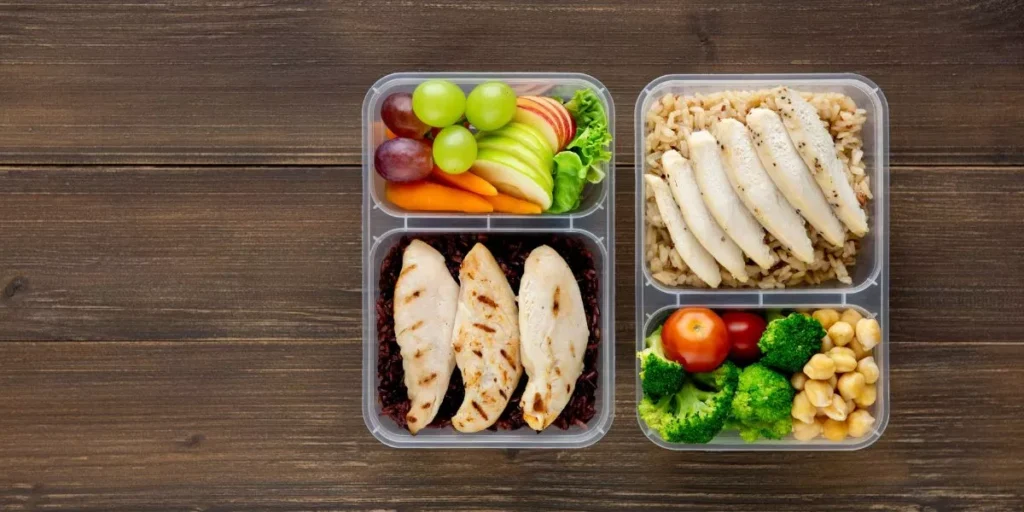
When it comes to optimizing your meal prep routine for freshness, taste, and nutrition, there’s a key element that can make all the difference: strategic meal planning. By incorporating a few simple yet effective strategies into your meal prep arsenal, you can revolutionize the way you approach your weekly food preparation. From smart ingredient selection to proactive storage solutions, these tips can help you unlock a whole new level of culinary success in your kitchen.
Food Storage Essentials
To keep your meals fresh and organized, stock up on these food storage essentials. Invest in a variety of airtight containers in different sizes to store leftovers, prepped ingredients, or ready-to-eat meals. These containers help maintain freshness and prevent spills in your fridge or bag. Ziplock bags are also handy for storing snacks, sliced fruits, or portioned nuts. They’re lightweight and easily disposable, making them perfect for on-the-go snacking.
Consider getting some glass containers for reheating meals in the microwave or oven. Glass is safe for reheating and doesn’t absorb odors like plastic containers can. Mason jars are versatile for storing salads, overnight oats, or homemade dressings. They’re easy to clean and provide a charming presentation.
Don’t forget about labeling your food containers with the date and contents to avoid confusion and food waste. A roll of masking tape and a permanent marker will do the trick. Keeping your food storage organized and clearly labeled will make meal prep a breeze.
Meal Prep Containers Guide
Invest in the right meal prep containers to streamline your meal preparation process. When choosing containers, opt for ones that are durable, leak-proof, and microwave-safe for easy reheating. Look for containers that are stackable to save space in your fridge or pantry. Consider investing in a variety of sizes to accommodate different portion sizes and meal types. For example, smaller containers are perfect for snacks or sides, while larger ones work well for main dishes or salads.
To keep your meals fresh longer, select containers that are airtight to prevent air exposure and maintain freshness. Glass containers are a great option as they’re non-toxic, stain-resistant, and don’t retain odors. Additionally, glass containers are microwave, oven, dishwasher, and freezer-safe, providing versatility for various meal prep needs.
When storing liquids or saucy dishes, choose containers with secure locking lids to prevent leaks and spills. This is especially important if you plan on transporting your meals. Investing in high-quality meal prep containers won’t only help keep your meals fresh and tasty but also make your meal prep routine more efficient and enjoyable.
Fresh Ingredients Selection
When selecting fresh ingredients for your meal prep, prioritize quality and seasonal availability. Opt for fruits and vegetables that are firm, vibrant in color, and free from bruises or blemishes. Choosing produce at the peak of its freshness ensures better flavor and higher nutrient content in your meals. Consider visiting local farmers’ markets or grocery stores known for their fresh produce to get the best ingredients for your meal prep.
Additionally, pay attention to the seasonality of ingredients. Seasonal fruits and vegetables not only taste better but are also more cost-effective. They’re harvested at the right time, making them naturally flavorful and packed with nutrients. By aligning your meal prep with what’s in season, you can enjoy a variety of flavors throughout the year while supporting local farmers.
Remember to wash and properly store your fresh ingredients to maintain their freshness and quality. Proper storage techniques, such as keeping produce in the crisper drawer of your refrigerator or storing herbs in a damp paper towel, can help prolong the shelf life of your ingredients. By selecting high-quality, seasonal ingredients, you set the foundation for delicious, nutritious meals during your meal prep sessions.
Nutrient-Rich Meal Prepping
For nutrient-rich meal prepping, focus on incorporating a variety of whole foods packed with essential vitamins and minerals to optimize your health and energy levels. Start by including colorful fruits and vegetables like berries, spinach, bell peppers, and sweet potatoes. These foods are rich in antioxidants, fiber, and key nutrients that support your overall well-being.
In addition to fruits and vegetables, prioritize lean proteins such as chicken, turkey, tofu, or beans. Protein is essential for muscle repair, satiety, and overall body function. Incorporating whole grains like quinoa, brown rice, or whole-wheat pasta can provide fiber, B vitamins, and sustained energy throughout the day.
Don’t forget healthy fats from sources like avocado, nuts, seeds, and olive oil. These fats are crucial for brain function, hormone production, and nutrient absorption. Lastly, include dairy or plant-based alternatives for calcium and vitamin D to support bone health.
Trending Products














